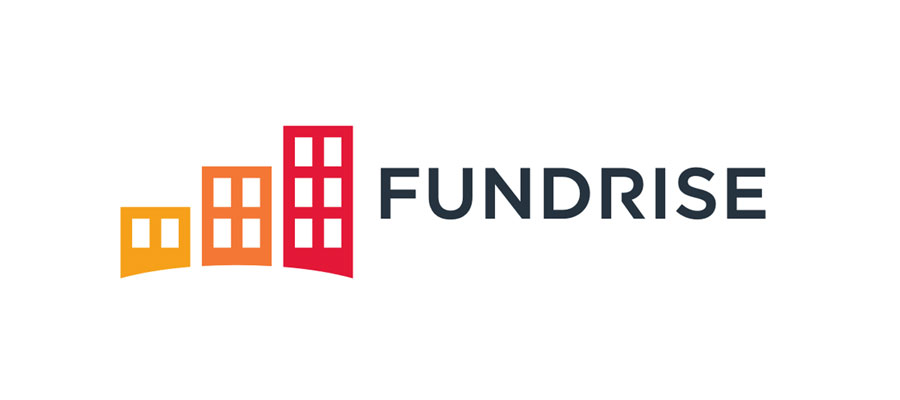Think you need thousands to start investing? Not anymore.
Micro-investing apps make it possible to grow your money with just a few dollars at a time. Whether you’re rounding up spare change from everyday purchases or setting up automatic deposits, these apps make investing effortless—even if you’ve never done it before.
The key to building wealth isn’t waiting until you have extra cash; it’s getting started as soon as possible. Thanks to compound interest, even small investments can add up over time. The best micro-investing apps help you put your money to work without complicated strategies or high fees.
8 Best Micro-Investing Apps
Below, we’ve rounded up the top micro-investing apps of 2025, so you can start investing today—no matter your budget or experience level.
1. Robinhood
ETF’s, crypto
Robinhood aims to make investing accessible to everyone, which is evident in the fact that the company doesn’t charge any commission or management fees.
2. Webull
Webull is a stock trading app offering free stock trading as well as free trades on ETFs, options and cryptocurrencies.
Webull also allows users to trade fractional shares, making it a great choice for micro investing.
3. Stash
retirement accounts
Stash is another hands-off micro-investing app designed for beginner investors. After you sign up, Stash will ask you a series of questions to determine your tolerance for investment risks. You will be labeled as a conservative, moderate, or aggressive investor.
4. Public
Public.com is a blend of both investment and social media platforms. It’s designed for younger and socially oriented investors who would like to own fractional shares of stocks and ETFs.
5. SoFi Invest
SoFi is a well-known brand in the personal finance space, and their investing app is another high-quality product.
6. Plynk
Plynk is designed to guide your learning while you begin to invest. The Plynk app offers investors access to a selection of stocks, ETFs, mutual funds and four cryptocurrencies. And you can start investing with just $1.
7. Betterment
If you’re looking for something a little more hands-on, then Betterment might be a suitable option for you. Betterment gives you the option to work with a financial advisor who can make investing recommendations.
8. M1 Finance
M1 Finance might be the best micro investing app for more experienced investors. It is ideal for those looking for customized investment portfolios with some automated options, as well as those looking to set up commission free retirement accounts.
What is micro-investing?
According to one survey, more than 47% of Americans are not saving for retirement. When pressed about their decision not to invest, over 34% said they don’t have enough money to invest.
The basic premise behind micro-investing is that you only need a few dollars to start investing. When you use a micro-investing app, you invest in very small increments by buying fractional shares.
With a micro-investing app, you can invest as little as $5. And with micro-investing, you don’t have to know anything about the stock market. The money you save is put in a portfolio of stocks that the company creates for you.
Is micro-investing even worth it?
Micro-investing won’t make you rich overnight, but it’s one of the easiest ways to start building wealth. If you’re holding off on investing because you don’t have extra cash, micro-investing removes that barrier.
Instead of trying to save large amounts before jumping in, you can start with just a few dollars. The real advantage is getting into the habit of investing consistently—something even seasoned investors struggle with.
Think of micro-investing as a stepping stone. It’s a great way to start saving and learning about investing, even if it won’t fully fund your retirement. Over time, you can increase your contributions and explore other investment strategies. But the key is to start now, so your money has more time to grow.
See also: How to Invest: A Basic Guide to Making Your Money Grow

Pros & Cons of Micro-Investing Apps
While micro-investing apps make it easier than ever to start investing, they’re not the right fit for everyone. Here’s a closer look at their biggest benefits and drawbacks:
Pros
- Invest with as little as $1: No need to save up thousands—start small and grow your portfolio over time.
- Automated investing: Many apps let you set up recurring deposits, so you can build wealth without thinking about it.
- No need to pick stocks: Many platforms offer pre-built portfolios or robo-advisors that handle investing for you.
Cons
Limited control over investments: Many apps focus on preset portfolios rather than letting you pick individual stocks.
Small investments take time to grow: Micro-investing helps you build habits, but it’s not a shortcut to wealth.
Monthly fees can add up: Some apps charge $1 to $5 per month, which can be high if you’re investing small amounts.
Features of the Best Micro-Investing Apps
Not all micro-investing apps are created equal. The best ones make investing simple, affordable, and accessible. Here’s what to look for when choosing the right app:
- Easy to Use: A clean, intuitive interface that makes investing simple—even for beginners.
- Low Minimums: Many apps let you start investing with as little as $1, removing financial barriers.
- Diversified Portfolios: Pre-built investment options help spread risk without requiring expert knowledge.
- Education Tools: Some platforms offer investing guides, videos, and resources to help you learn as you go.
- Recurring Investments: Automate deposits from your bank account to build wealth consistently.
- Additional Features: Some apps offer extras like retirement accounts, cash-back rewards, or interest-earning savings accounts.
By focusing on these key features, you can find an app that fits your investing style and financial goals.
How to Start Micro-Investing
Getting started with investing can feel overwhelming, but micro-investing apps make it easier than ever. You don’t need a finance degree or a large sum of money—just a simple plan to begin building wealth. Follow these steps to start investing with confidence.
1. Choose Between DIY or Automated Investing
If you want full control over your investments, you can pick individual stocks and ETFs. But if you’re unsure where to start, a robo-advisor can handle everything for you based on your risk tolerance and goals. Automated investing is a great way for beginners to get started without making constant decisions.
2. Set Your Investment Goals
Are you investing for long-term growth, saving for a big purchase, or just getting your feet wet? Defining your goals helps you choose the right app and investment strategy. Long-term investing works best when you stay consistent, rather than trying to time the market.
3. Decide How Much to Invest
You don’t need to invest large amounts to see progress. While traditional advice suggests saving 20% of your income, micro-investing allows you to start with just a few dollars. The key is consistency—whether it’s $5 a week or $50 a month, sticking to a routine helps your money grow over time.
4. Pick the Right Micro-Investing App
Once you’ve set your budget and goals, choose a platform that fits your needs. Look for low fees, easy-to-use features, and investment options that match your strategy. Many apps let you switch or use multiple platforms, so you’re not locked into one choice.
Final Thoughts
Micro-investing apps make it easy to start building wealth—even with just a few dollars. Whether you prefer hands-on trading or automated investing, there’s an app that fits your style. Small, consistent investments add up over time, and the sooner you start, the more time your money has to grow.
While micro-investing alone won’t fund your retirement, it’s a smart way to develop good financial habits. As your income grows, you can increase your contributions and explore other investment options. The important thing is to take that first step and start investing today.
Frequently Asked Questions
Which micro-investing app has the lowest fees?
Robinhood, SoFi Invest, Webull, Public, and M1 Finance offer commission-free trading, meaning they don’t charge fees for buying or selling stocks and ETFs. However, some apps have monthly subscription fees, so always check the fine print before signing up.
Can you withdraw your money anytime?
Yes, but processing times vary. Some apps take a few business days to transfer funds, and if you sell investments, the trade may take one to three days to settle before withdrawal.
Are micro-investing apps safe?
Most micro-investing apps are regulated by the SEC and offer SIPC insurance, protecting up to $500,000 in case of broker failure. However, investments carry market risks, so you can lose money.
How do taxes work with micro-investing apps?
Profits from selling stocks or ETFs are subject to capital gains tax. Some apps offer tax-advantaged accounts, like IRAs, to help reduce tax liability. Consult a tax professional for guidance.
Are there any limitations on the types of investments I can make with these apps?
Micro-investing apps typically focus on stocks, ETFs, and sometimes cryptocurrencies. While they offer a wide range of investment options within these categories, they may not provide access to more complex financial instruments like options, futures, or mutual funds.












